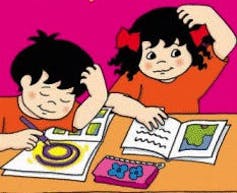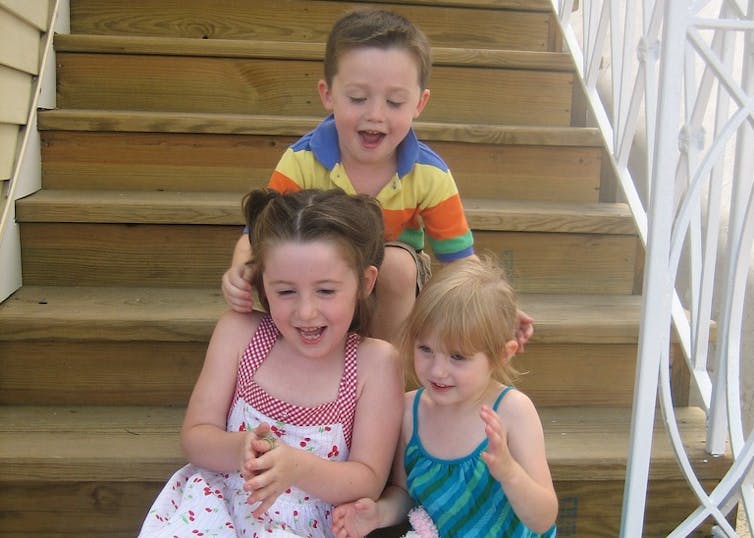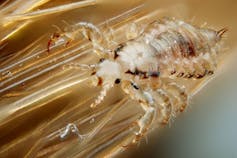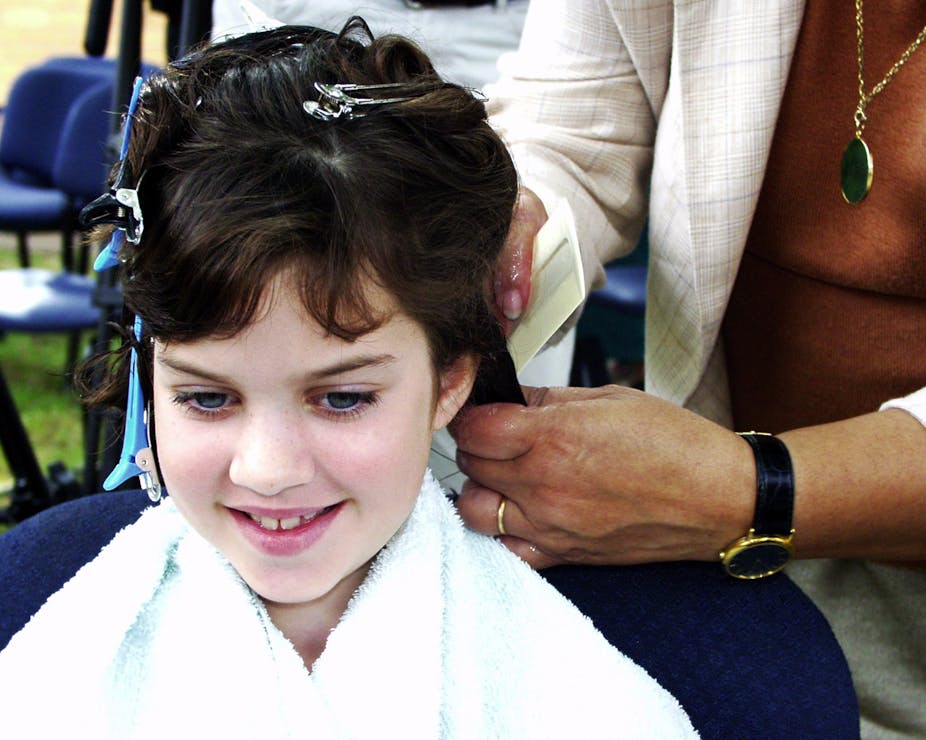Across the country, tiny blood-sucking parasites are settling in for the new school year. Head lice infestation, officially known as pediculosis, is common in primary school-aged children. But don’t worry, head lice don’t transmit any disease-causing pathogens and the irritation they cause is relatively minor.
For carers of children affected by head lice, however, anxiety and stress brought on by perceived social ramifications probably causes more problems than the physical impact of the lice themselves.
What are head lice?
Head lice (Pediculus capitis) are small insects less than half a centimetre in length. They’re typically a light grey to brown colour and have strong claws that they use to cling onto hairs. These claws enable the lice to move up and down and across the strands of our hair, and scurry down to the scalp to feed on blood. Despite common misconceptions, head lice don’t jump, they don’t fly and they don’t swim.
A female louse can lay over 100 eggs (commonly known as nits) in her lifetime. The eggs are attached to the hair shaft close to the scalp with a super strong adhesive secreted by the louse itself. Immature lice generally hatch after a week, and reach maturity in less than two weeks. Lice may live for up to a month.

The main hotspots for head lice activity in Australia are primary schools. Studies have shown that, in some areas, up to four in five children may be infested. Girls are particularly susceptible, which isn’t surprising given all that long hair waving about and close contact between friends.
Head-to-head contact is essentially the only way lice are transmitted between children. And they rarely discriminate. Dirty or clean, blonde or black, lice will swing across at the first chance of setting up a new home.
You may be surprised that sharing hats or hair brushes may not be a fast track to head-lice infestation. While the lice’s claws are perfectly suited to life among hair strands, they’re not much use for crawling around on the ground, furniture or on clothing. Once off hair, they don’t live for long.
My child has nits!
So what to do if your child gets head lice? First, don’t panic. There’s no need to “decontaminate” your home. Head lice cannot complete their life cycle on animals such as dogs, cats, possums or birds. And bedding, furniture and other household objects don’t act as hiding spots for head lice either.
As noted in the latest guidelines from National Health and Medical Research Council, there’s no need to keep children home from school if treatment has commenced. And while you could shave your child’s head, that’s probably a little drastic and there are less dramatic options available.
It’s a good idea to check, and treat if required, all the children and the adults in the family at the same time.

The non-chemical “wet comb” or “comb and conditioner” method is generally considered the preferred option for head-lice control. This is effective but it can be time consuming. Getting infested children to sit still long enough to complete the process is probably more difficult than removing head lice themselves.
There are a number of steps in this process but, in summary, it involves applying hair conditioner to dry hair to stun the lice, which also allows them to be more easily combed out. A good quality fine-tooth lice comb is essential.
It’s important to then systematically work through all the hair, combing from scalp to the tip of the hair strands. Wipe conditioner from the comb onto a tissue or paper towel and you’ll see any lice. Combing should be repeated until no live lice are detected. As some eggs will escape this process, it’s important to do it all over again a week later.
It’s essential to collect any newly hatched lice before they’re able to mate and lay a new batch of eggs.
Chemical treatments
For persistent infestations, chemical treatments are often needed.
Chemical treatments (generally known as pediculicides) need to be listed or registered on the Australian Register of Therapeutic Goods (administered by the Therapeutic Goods Administration). There are almost 100 products available including insecticides, repellents and lice combs.

Pediculicide formulations generally work well against lice but are less effective against eggs so, like the wet comb method, treatment needs to be repeated after seven days. The benefit of these formulations is that treatment may only be required for 20 minutes or so (although some products are recommended for use overnight).
In recent years, the development of resistance to many of the over-the-counter head-lice treatments has been documented in the United States, the United Kingdom and Australia.
An oral medication currently used to treat internal parasites, Ivermectin, has been proposed as an alternative to topical pediculicides and studies to determine if this could work are currently underway in Australia.
Natural products and alternative strategies
Products containing botanical extracts are also available. While some may help prevent reinfestation, it may actually be the slippery nature of oils in the formulations, rather than their repellent qualities, that keep head lice away.
Hair dryers may provide a non-chemical treatment option, and similarly, hair straighteners may kill lice. But keep in mind that these devices are known to cause injuries to children.
At the end of the day, the key to an effective strategy in your household will be to find a treatment that your children will tolerate and that won’t test your patience too much.

